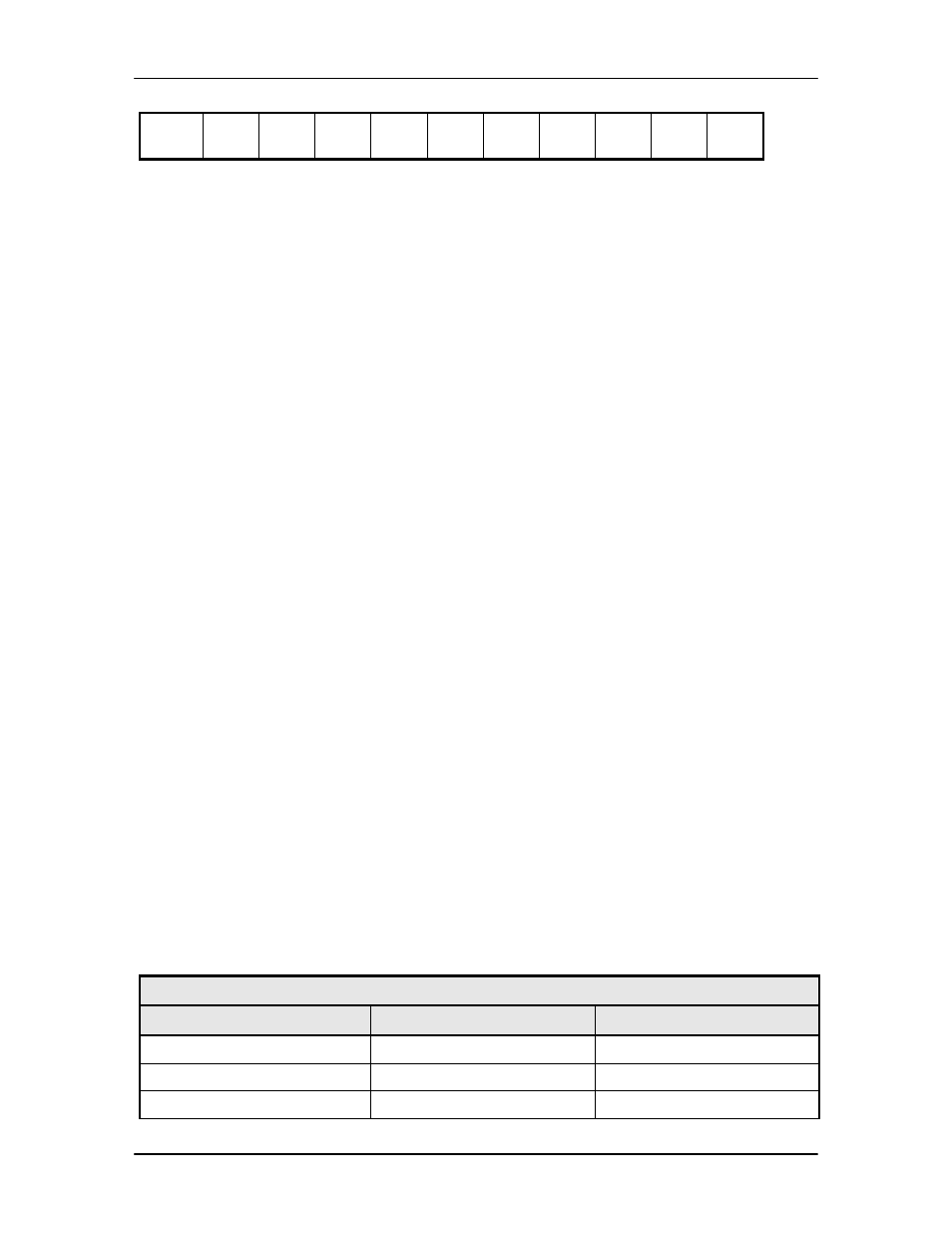Comtech EF Data DD240XR Rev Е User Manual
Page 49

DD240XR High-Speed Digital Demodulator
User Interfaces
MN-DD240XR – Rev. E
4-29
ST
B
0
B
1
B
2
B
3
B
4
B
5
B
6
B
7
S1
ST,
etc.
The stop bit S1 is a mark. Data flow remains in a hold mode until the start bit ST is replaced by a
space. The start bit (ST) is not part of the actual data (B
0
- B
7
).
The above byte-oriented protocol is standard for UART based serial communication ports such as
Workstation or Personal Computer (PC) COM ports. COM ports should be configured for 8 data
bits, no parity, and one stop bit. For example, for 9600-baud operation, COM ports should be
configured as:
9600, 8, N, 1
The COMMSPEC developed for use with the Radyne Link Level Protocol (RLLP) organizes the
actual monitor and control data within a shell, or "protocol wrapper", which surrounds the data.
The format and structure of the COMMSPEC message exchanges are described herein. Decimal
numbers have no suffix; hexadecimal numbers end with a lower case h suffix and binary values
have a lower case b suffix. Thus, 22 = 16h = 000010110b. The principal elements of a data
frame, in order of occurrence, are summarized as follows:
<SYN> - the message format header character, or ASCII sync character, that defines the
beginning of a message. The <SYN> character value is always 16h.
<BYTE COUNT> - the Byte Count is the number of bytes in the <DATA> field, ranging from 0
through 509. This field is 2 bytes long for the DD240 protocol.
<SOURCE ID> - the Source Identifier defines the multi-drop address origin. Note that all nodes
on a given control bus have a unique address that must be defined.
<DESTINATION ID> - The Destination Identifier serves as a pointer to the multi-drop destination
device that indicates where the message is to be sent.
<FRAME SEQUENCE NUMBER> - The FSN is a tag with a value from 0 through 255 that is sent
with each message. It assures sequential information framing and correct equipment
acknowledgment and data transfers.
<OPCODE> - The Operation Code field contains a number that identifies the message type
associated with the data that follows it. Equipment under MCS control recognizes this field
firmware identification and subsequently steers the DATA accordingly to perform a specific
function or series of functions. Acknowledgment and error codes are returned in this field. This
field is 2 Bytes for the DD240 protocol.
<...DATA...> - The Data field contains the binary, bi-directional data bytes associated with the
<OPCODE>. The number of data bytes in this field is indicated by the <BYTE COUNT> value.
<CHECKSUM> - The checksum is the module 256 sum of all preceding message bytes,
excluding the <SYN> character. The checksum determines the presence or absence of errors
within the message. In a message block with the following parameters, the checksum is
computed as shown below in Table 4-1.
Table 4-1. Checksum Calculation Example
BYTE FIELD
DATA CONTENT
RUNNING CHECKSUM
<BYTE COUNT> (Byte 1)
00h = 00000000b
00000000b
<BYTE COUNT> (Byte 2)
02h = 00000010b
00000010b
<SOURCEID>
F0h = 11110000b
11110010b